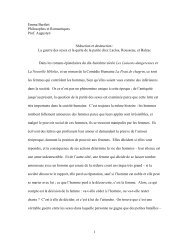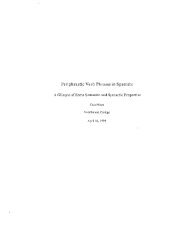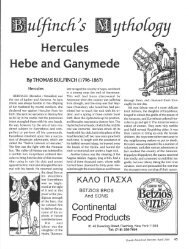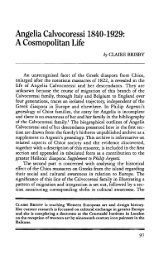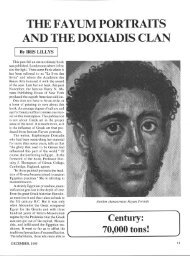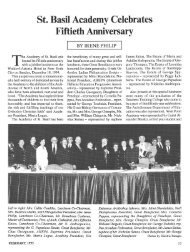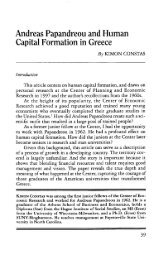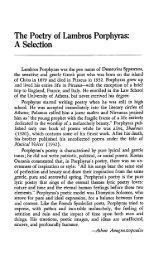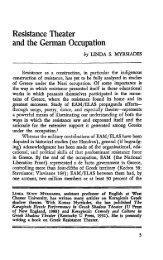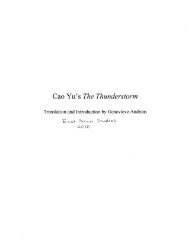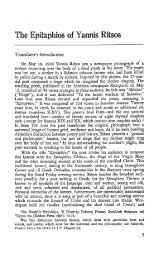Translating Neruda: Femininity and Sensuality ... - Triceratops Home
Translating Neruda: Femininity and Sensuality ... - Triceratops Home
Translating Neruda: Femininity and Sensuality ... - Triceratops Home
You also want an ePaper? Increase the reach of your titles
YUMPU automatically turns print PDFs into web optimized ePapers that Google loves.
Mueller 10<br />
features water <strong>and</strong> the woman in the most intimate relationship seen since “Poema 7,”<br />
naming the ocean as a feminine entity (despite the masculinity of the Spanish noun, “el<br />
océano”) <strong>and</strong> giving her a fully realized persona <strong>and</strong> storyline.<br />
Veinte poemas de amor y una canción desesperada was <strong>Neruda</strong>’s “first<br />
substantial success, commercial <strong>and</strong> critical” (Stavans 957). While this was his third<br />
published book of poetry, it was the first to attract public attention, <strong>and</strong> is his earliest<br />
work that is widely available in English. A collection of twenty untitled but numbered<br />
poems <strong>and</strong> a final “canción desesperada,” these love poems are direct, sexual, <strong>and</strong><br />
intimate, exemplifying what Felstiner terms <strong>Neruda</strong>’s “erotic love” period (14). The<br />
eroticism of this collection of poems played a key role in defining both North <strong>and</strong> South<br />
American perception of <strong>Neruda</strong>, but the full collection was not translated into English<br />
until 1969, <strong>and</strong> the most widely available translation, by W. S. Merwin, demonstrates a<br />
level of eroticism very different from that found in the originals. The different<br />
translations of this poem are key examples of the bowdlerization <strong>and</strong> expurgation that I<br />
see at work in the English <strong>Neruda</strong>. Additionally, they illustrate the specific ways that<br />
translators’ domesticating or foreignizing choices determine the way certain metaphors or<br />
uses of imagery carry over into the target language, relative to the original poems.<br />
“Poema 7” illustrates the relationship between a man <strong>and</strong> the woman he loves,<br />
drawing heavily on water <strong>and</strong> darkness as representations of aspects of their relationship,<br />
with an undercurrent of eroticism throughout. The poem revolves around images of the<br />
sea; the opening lines establish the narrator as a metaphorical fisherman in the sea of a<br />
woman’s eyes. It reads, “tiro mis tristes redes / a tus ojos oceánicos,” using the<br />
expansiveness of the ocean to establish the woman’s eyes as immense. In the second



